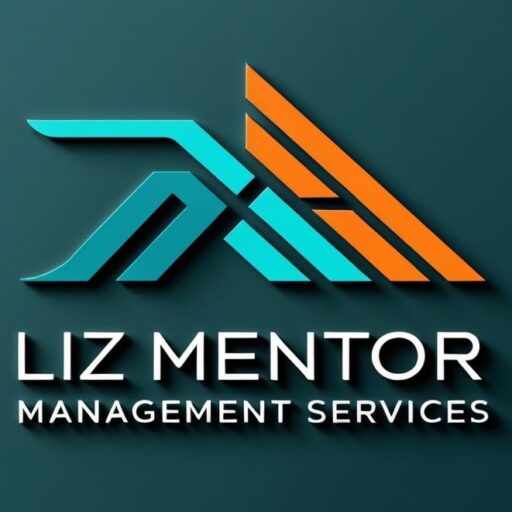Key Financial Levers – Driving Success Through Strategic Action
In any organization, understanding the levers that drive performance is as important as understanding the numbers themselves. While financial literacy equips you to read balance sheets, income statements, and cash flow reports, Key Financial Levers goes a step further. It teaches participants how to identify, influence, and optimize the key drivers that determine business success.
Financial levers are essentially the mechanisms within a company that, when adjusted or managed effectively, produce measurable improvements in performance. These levers are not limited to cost reduction or revenue growth; they span across people, processes, and strategy, influencing both short-term results and long-term sustainability.
What Are Key Financial Levers?
A financial lever is any factor in a business that can be “pulled” to impact the organization’s financial health. Common levers include:
Investing in People: Employee performance, engagement, and skills directly influence productivity, innovation, and customer satisfaction.
Effective Communication: Clear communication reduces inefficiencies, prevents misunderstandings, and aligns teams toward shared goals.
Process Improvement: Streamlined operations reduce costs, improve speed, and enhance quality.
Goal Alignment: Ensuring that departmental and individual goals connect to overarching business objectives drives cohesive action and measurable results.
Real power of these levers lies in the interconnectedness of business systems. Adjusting one lever often affects others. For instance, investing in employee training may increase short-term costs but can lead to higher productivity, improved customer satisfaction, and ultimately increased revenue.
Investing in People: The Most Influential Lever
One of the most impactful financial levers is investing in human capital. Employees are not just resources; they are the engines of innovation, customer service, and operational excellence. There are several ways this lever can be applied:
Training and Development: Equipping staff with the skills they need enhances productivity and reduces errors.
Performance Incentives: Linking rewards to measurable outcomes motivates employees to perform at their best.
Employee Engagement: Engaged employees are more committed, contribute ideas, and advocate for the company.
Investing in people is not a cost—it’s a strategic lever that pays dividends in efficiency, morale, and profitability.
Effective Communication: Aligning Teams and Actions
Poor communication can undermine even the most sophisticated strategies. Key Financial Levers underscores the importance of using communication as a lever to:
Clarify expectations and roles.
Reduce duplication of effort or wasted resources.
Facilitate decision-making and problem-solving.
Build trust between departments, management, and employees.
Effective communication ensures that the other financial levers are applied consistently and strategically, amplifying their impact across the organization.
Process Improvement: Streamlining for Results
Operational inefficiencies are often hidden costs that erode profitability. Through process improvement, businesses can identify bottlenecks, waste, and redundancies. Key Financial Levers teaches participants to:
Map workflows to visualize inefficiencies.
Apply continuous improvement principles to enhance quality and speed.
Measure the impact of process changes on both costs and outcomes.
Even small enhancements in processes can significantly affect the bottom line, making this lever an essential tool for managers and decision-makers.
Goal Alignment: Connecting Strategy to Action
Goals are not just checkboxes; they are strategic anchors that guide resource allocation and daily activities. Key levers highlights the importance of aligning individual, departmental, and organizational goals:
Employees need to understand how their tasks contribute to larger objectives.
Departments must coordinate to avoid conflicting priorities.
Strategic objectives should influence how resources are allocated and decisions are made.
Goal alignment ensures that the organization moves cohesively toward long-term success, turning strategy into tangible results.
Case Study: Applying Financial Levers in Action
Consider a mid-sized company struggling with declining customer satisfaction and flat revenue growth. A superficial response might involve marketing campaigns or cost-cutting initiatives. However, a financial lever approach, as taught in Key Levers, would include:
Investing in People: Conducting customer service training and empowering employees to resolve issues proactively.
Effective Communication: Establishing cross-departmental briefings to ensure consistent messaging and smooth handoffs between teams.
Process Improvement: Streamlining the complaint resolution process to reduce response times.
Goal Alignment: Linking customer satisfaction metrics to departmental objectives and employee incentives.
Within a few months, the company could see measurable improvements in both revenue and customer satisfaction, demonstrating the power of strategically applied financial levers.
The Interplay Between Levers and Business Acumen
Understanding key financial levers reinforces all the concepts of business acumen. Let’s tie it together:
Critical Thinking: Identifying which levers to adjust requires careful analysis and foresight.
Financial Literacy: Knowing the impact of each lever on financial statements ensures informed decisions.
Strategic Perspective: Lever adjustments must align with long-term organizational goals to create sustainable growth.
Participants learn that levers are not isolated actions—they are part of a system that, when managed thoughtfully, magnifies their impact across the organization.
Turning Knowledge into Action
One of the most common challenges in business is knowing the right action to take. Here we can emphasize practical application:
Identify levers with the greatest potential impact.
Evaluate the current state and set measurable targets.
Implement interventions carefully, monitoring results.
Adjust actions based on feedback and outcomes.
This methodical approach ensures that decisions are both strategic and measurable, providing clarity and accountability.
Building a Culture That Uses Levers Effectively
Organizations that successfully harness key financial levers cultivate a culture of informed action. Key Levers encourages leaders to:
Empower employees to understand the impact of their work.
Foster transparency and accountability.
Encourage continuous improvement through small, incremental adjustments.
When leveraged consistently, these practices create a resilient organization capable of adapting to change, seizing opportunities, and achieving sustainable growth.
Conclusion
Key financial levers are the mechanisms through which strategic actions translate into measurable results. Business Acumen provides participants with a clear understanding of how to apply these levers effectively, from investing in people and improving processes to aligning goals and fostering communication.
By mastering these levers, professionals gain the ability to influence outcomes, drive performance, and enhance organizational success. Coupled with critical thinking, financial literacy, and strategic awareness, understanding key financial levers positions employees and leaders to not just respond to challenges—but to shape the future of their organizations with confidence and precision.
Every lever pulled is a step toward smarter decisions, stronger performance, and tangible business success.



